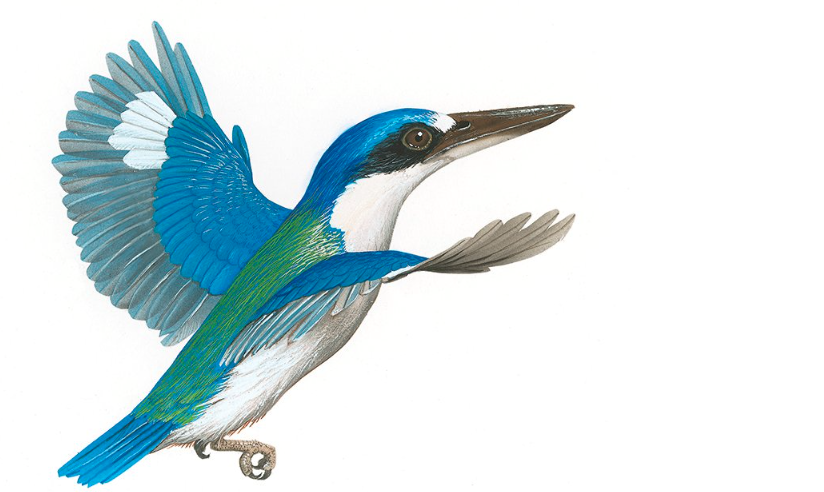The crested kingfisher wears the most impressive crown

Bec Crew
Bec Crew
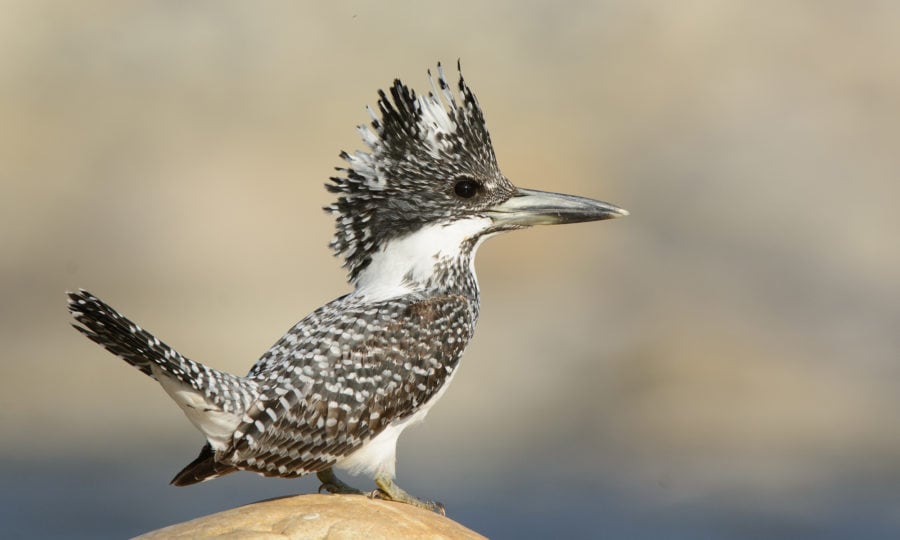
WHERE OTHER members of the kingfisher family are admired for their brilliant colours, the crested kingfisher (Megaceryle lugubris) stands out for its stark monochromatic look – a king in black and white.
Named for its muted colouring (lugubris is the Latin word for “mournful”), the crested kingfisher joins Indonesia’s sombre kingfisher (Todiramphus funebris) as a symbol of melancholic restraint.
Spread throughout India, Indochina, and Southeast Asia, the crested kingfisher is one of the bigger kingfisher species, growing to 41 cm long, which is about the size of a large kookaburra.
It’s most often found scouting prey in fast-moving mountain rivers and streams, and while it’s known to feed on fish like trout and chub, it will happily make a meal out of a crayfish, crab, or frog.
One of the coolest things about the crested kingfisher is the difference between the males and the females.
Like the double-eyed fig parrot, a distinctive flash of colour means you can instantly tell them apart. While the female is black and white all over:
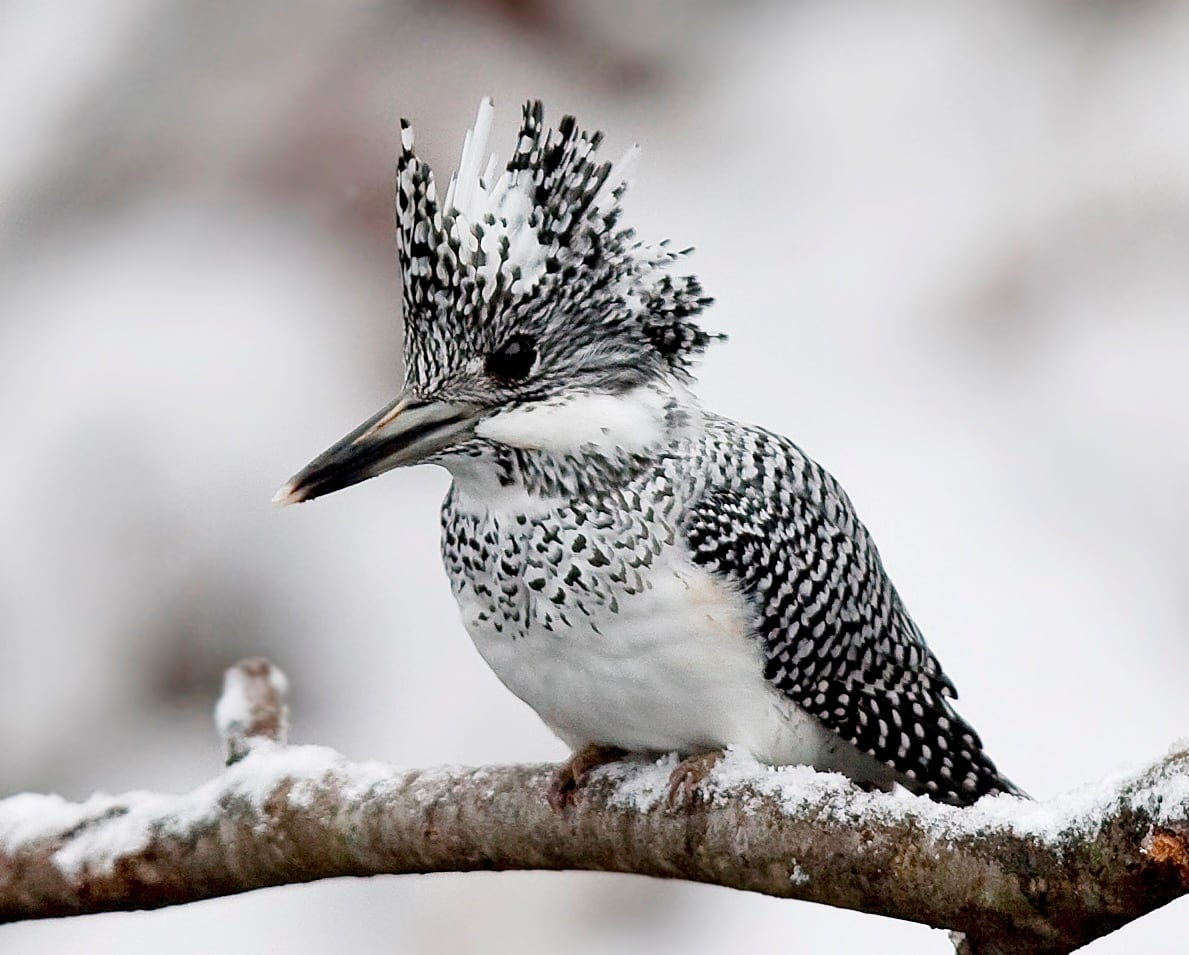
The male has a beautiful splash of bright red across his chest:
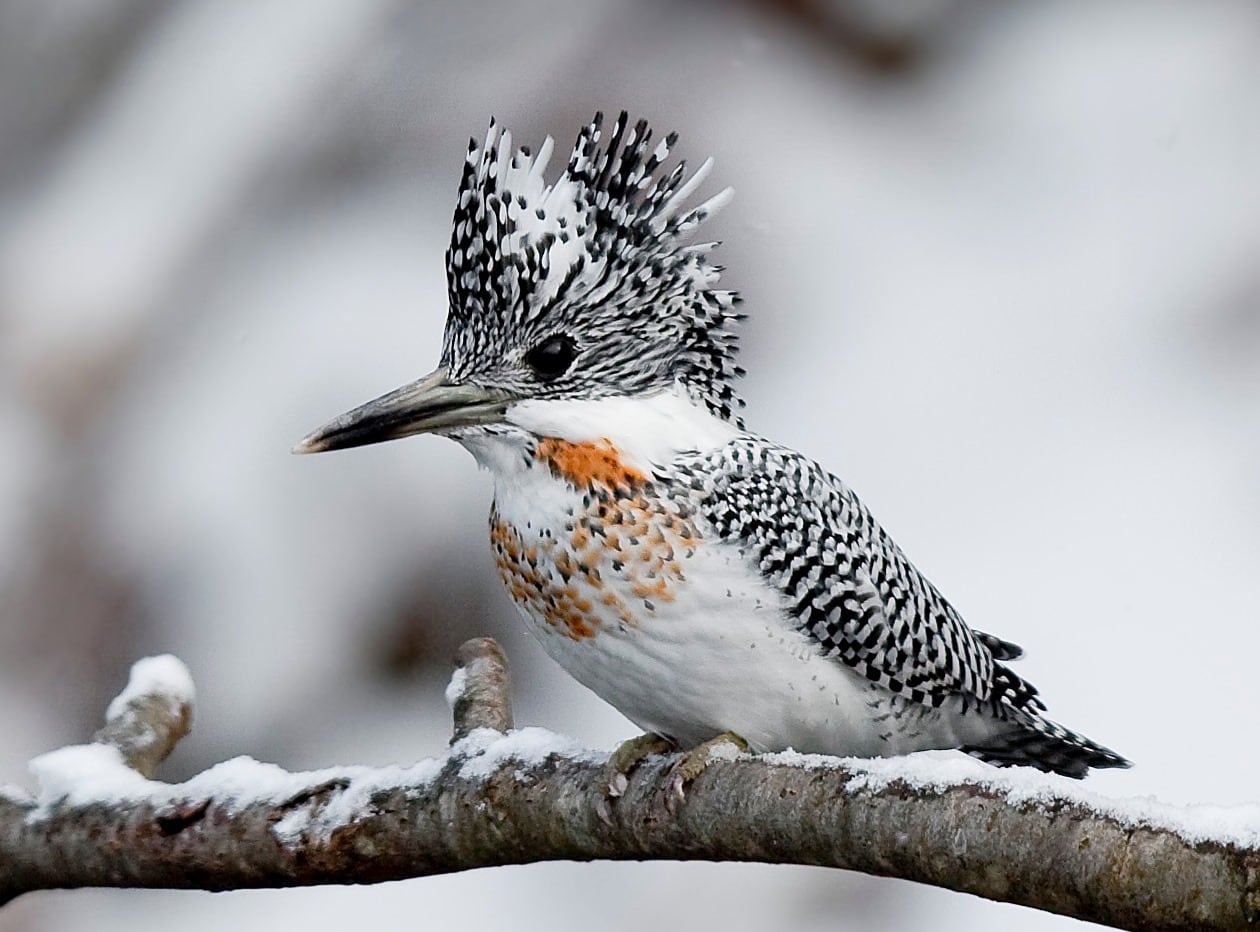
Both males and females lack a supercilium, the technical name for the band of plumage that runs across the top of the head and over the eye like an eyebrow.
It’s featured on a bunch of different bird species, including the pied kingfisher (Ceryle rudis) of sub-Saharan Africa and southern Asia, which has similar colouring to the crested kingfisher, but a really strong supercilium:
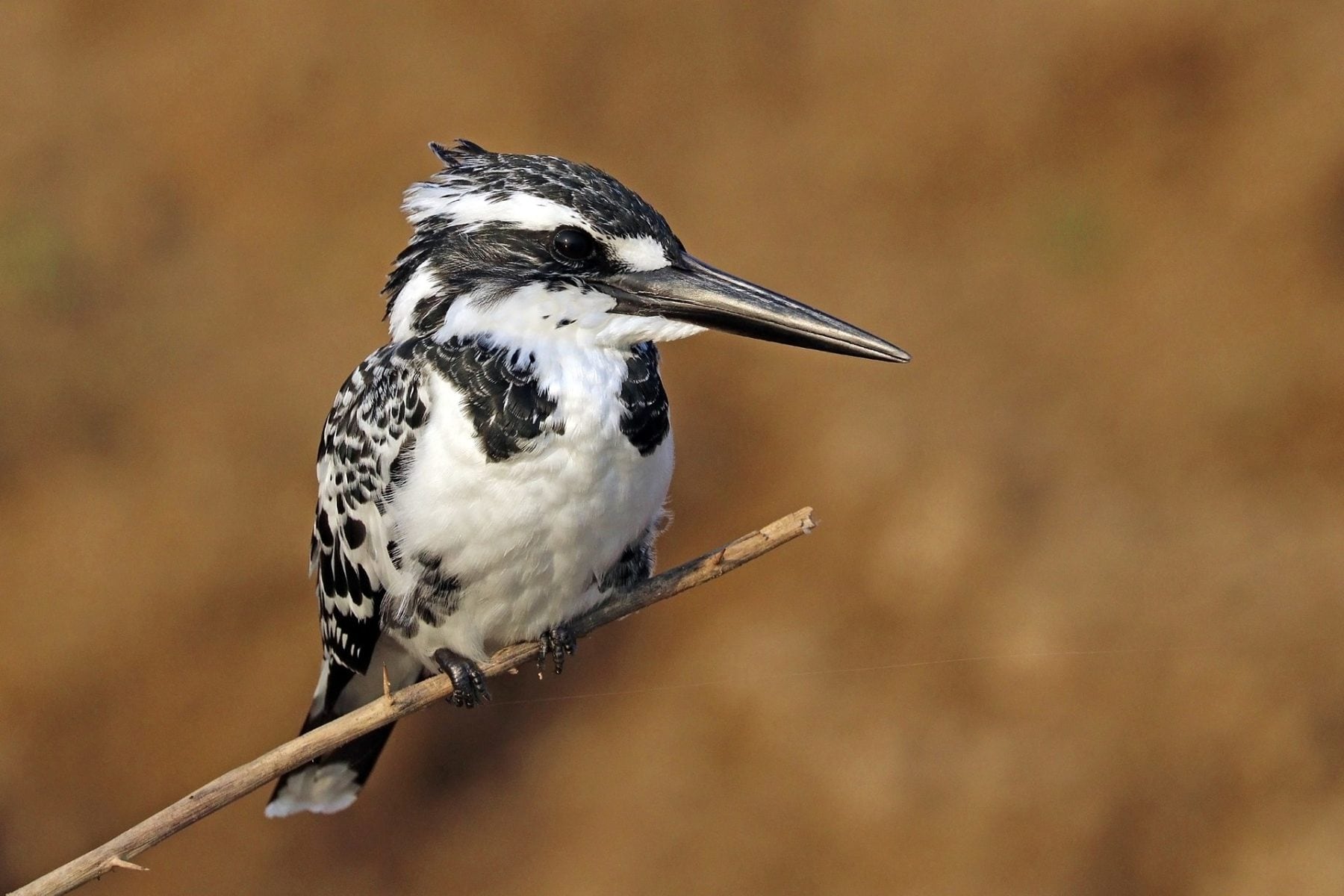
Crested kingfishers belong to the water kingfisher (Cerylinae) subfamily of kingfishers, the members of which are spread throughout Africa, Asia, and the Americas.
There are two other subfamilies: the tree kingfishers (Halcyoninae) are found mostly in Asia and Australasia and include species such as the kookaburra and buff-breasted paradise kingfisher; the river kingfishers (Alcedininae) are found in Europe and northern Asia.
Water kingfishers are all specialist fish-eating species, and you can see the crested kingfisher in action here:
For a breakdown of the kingfisher species that live a little closer to home, check out this guide.
